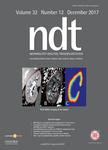版权所有:内蒙古大学图书馆 技术提供:维普资讯• 智图
内蒙古自治区呼和浩特市赛罕区大学西街235号 邮编: 010021

作者机构:Universidade Federal do Paraná Clinical Analysis Department Curitiba Brazil Universidade Tecnológica Federal do Paraná Graduate Program in Electrical and Computer Engineering Curitiba Brazil Universidade Federal do Paraná Biochemistry Department Curitiba Brazil Universidade Federal do Paraná Basic Pathology Department Curitiba Brazil Pontifícia Universidade Católica do Paraná Programa de Pós-Graduação em Ciências da Saúde Curitiba Brazil
出 版 物:《Nephrology Dialysis Transplantation》 (肾病学,透析,移植术)
年 卷 期:2022年第37卷第Supplement_3期
页 面:gfac077.013-gfac077.013页
学科分类:1002[医学-临床医学] 100210[医学-外科学(含:普外、骨外、泌尿外、胸心外、神外、整形、烧伤、野战外)] 10[医学]
摘 要:BACKGROUND AND AIMS Patients with chronic kidney disease (CKD) accumulate uraemic toxins (UTs). When compared to other conventional dialysis modalities, high volume haemodiafiltration (HDF) improves the removal of medium and low molecular weight UTs. The present study is a post-hoc analysis comparing the metabolomic profile in serum from patients under high flux HD (hf-HD) and HDF in HDFIT, a multicentric randomized controlled trial (RCT). METHOD Random (pre- and post-dialysis) samples from nine patients in a study arm were selected at baseline and at the end of the follow-up. To compare the samples, 26 possibly matching metabolites were identified by a t -test among the four groups using 1-H nuclear magnetic resonance (NMR). To evaluate the comparison between the modalities in a single treatment session, the clearance rates (CRs) of each metabolite were calculated based on pre- and post-dialysis samples. In addition, to evaluate the effect of UTs removal during the trial follow-up period, the pre-dialysis metabolite concentrations both at the baseline and 6 months were compared with the two arms of the study. RESULTS Evaluating the concentrations of the metabolites during the follow-up period for each study arm, it was possible to assess the effects of UTs removal during the study for each modality. The comparison of the intensity of the peaks identified 26 possible metabolites that differentiated hf-HD and HDF in this timeframe. The correlation (see Figure 1a) then suggested that the peak integrals of 16 of these metabolites increased from baseline to 6 months in the hf-HD, but not in the HDF arm. Amongst the metabolites, several are involved in important metabolic pathways, such as the metabolisms of phenylalanine and the biosynthesis of phenylalanine, tyrosine and tryptophan, which both relate to UTs and the development of cardiovascular diseases. The peak integration relative to glycolic acid was significantly higher ( P .05) at 6 months than at baseline (see